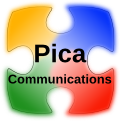
The Big Gamble
SA is a gamble, and the house always wins
By Paul DeGroot
Principal Consultant
Pica Communications
Unless you know much more than Microsoft does about the release dates, feature sets and prices of future products, SA is a gamble. Based on a typical three-year product cycle, in which the final feature set, licensing, and pricing may not be announced until 3 months before release, SA is a sure thing only about threemonths out of 36.
SA is probably best compared to a Vegas casino. The odds of a big win are about the same, and the house always wins in the long run.
I have difficulty coming up with a comparable business scenario in which:
-
Customers hand over money for a product they've never seen, and
-
The manufacturer has not finished designing the product, and
-
The manufacturer does not guarantee delivery of the product or a substitute, and
-
If the manufacturer fails to deliver a satisfactory product or any product at all, it still keeps the customer's money.
Sounds more like carnie game at the state fair than a commercial transaction. (My apologies to the carnies in the audience; at least their customers can have fun even when they lose.)
Some SA defenders compare it to insurance, but the insurance industry goes to great lengths to calculate the probability of an event occurring and sets the prices of insurance premiums accordingly. If SA were done that way, its price would be lower just after the release of a new product, since the release of the next version is years away, and the price would rise closer to the likely release of the next version, when the odds are more favorable that the customer would actually get something. But that's not the Microsoft way. Regardless of the risk, the bet is the same.
At times, the losses have been significant. Early adopters of new products can lose because the release of the next version is more likely to occur after their SA expires. Iin some cases, it doesn't make much difference when you buy a product: the release date is so far out that many customers will lose.
The biggest miss, in terms of both the time and the financial impact on customers, was the shipment of Vista more than five years after customers began purchasing SA in Oct. 2001.
The delay of more than five years meant that some customers had to renew SA on Windows XP for a second three-year period, bringing their total investment in Vista to nearly twice what the OS cost customers who did not purchase SAon Windows XP. To make matters worse, even after paying for Vista twice over, many of those same cust0mers found Vista unsatisfactory and continued to use XP. They might even have renewed SA on the OS for a third time to be eligible for an upgrade to Windows 7.
For these customers Microsoft offered no refunds, no extensions, and no compensatory discount on Windows 7 when customers finally got an OS upgrade they wanted to deploy.
While so far, such misses are the exception—most of the time, most customers will get at least one upgrade, and SA offers other benefits besides upgrades—the upgrades and other benefits will rarely ever result in a really big win for customers. As we delve further into the choices customers need to make and the benefits they get, you'll see that when the customer wins, the difference between a win and a pass on SA is rarely that great.
Finally, keep in mind that if you don't buy SA, you're also gambling. You're gambling that Microsoft won't come out with a compelling upgrade within the next 3-4 years. Although it's a gamble, customers have a bit more control over the odds here, because customers who take this side "win the bet" if they stay with the current product as long as possible. The more years they don't pay SA, the less likely that they're going to pay more than the regular license price.
